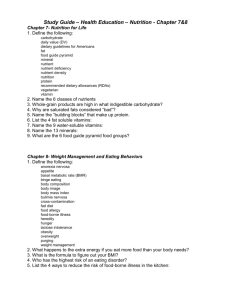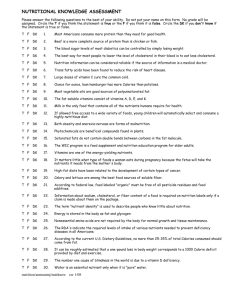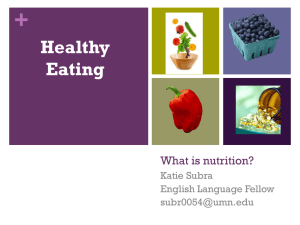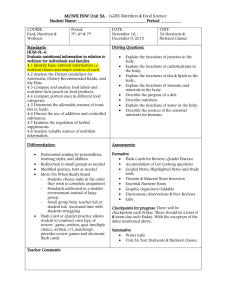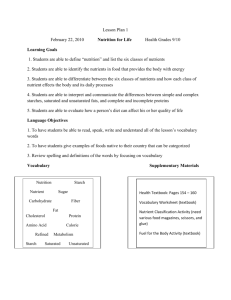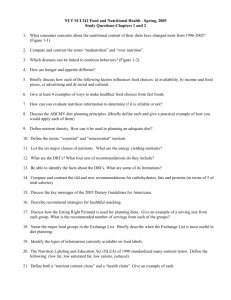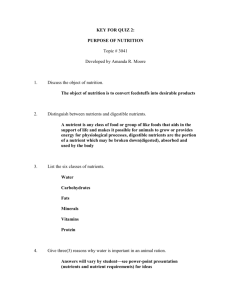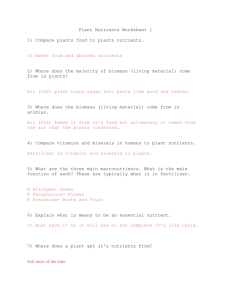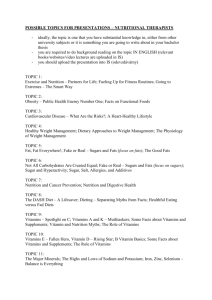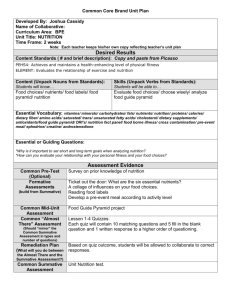Study Guide for Physical Health and Nutrition
advertisement
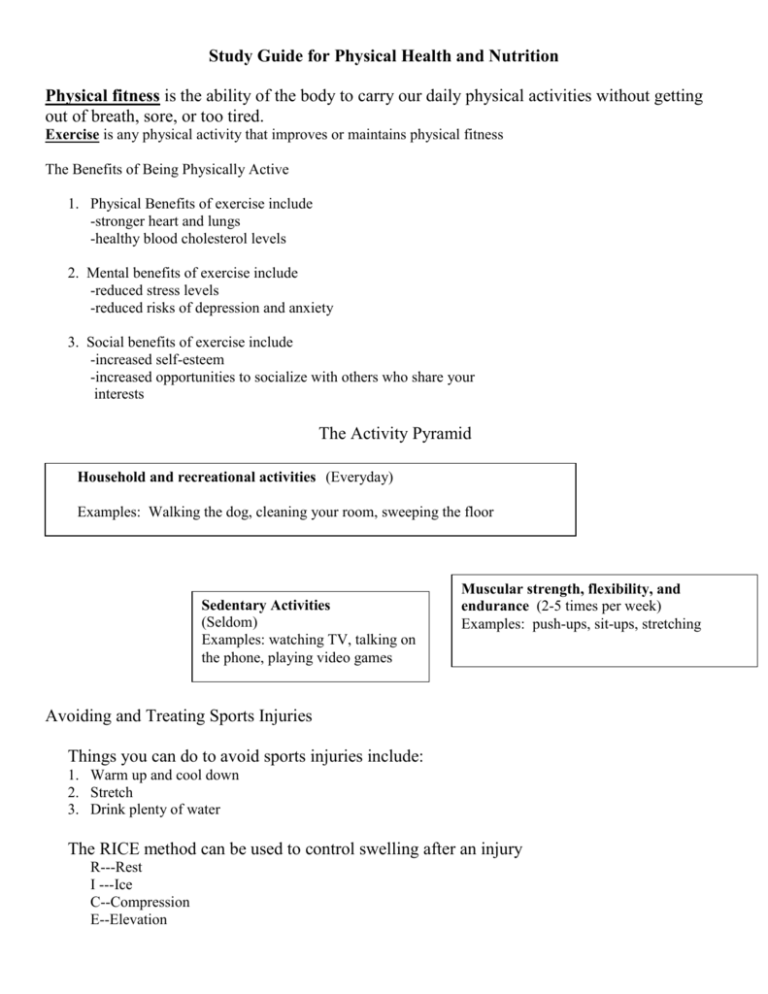
Study Guide for Physical Health and Nutrition Physical fitness is the ability of the body to carry our daily physical activities without getting out of breath, sore, or too tired. Exercise is any physical activity that improves or maintains physical fitness The Benefits of Being Physically Active 1. Physical Benefits of exercise include -stronger heart and lungs -healthy blood cholesterol levels 2. Mental benefits of exercise include -reduced stress levels -reduced risks of depression and anxiety 3. Social benefits of exercise include -increased self-esteem -increased opportunities to socialize with others who share your interests The Activity Pyramid Household and recreational activities (Everyday) Examples: Walking the dog, cleaning your room, sweeping the floor Sedentary Activities (Seldom) Examples: watching TV, talking on the phone, playing video games Muscular strength, flexibility, and endurance (2-5 times per week) Examples: push-ups, sit-ups, stretching Avoiding and Treating Sports Injuries Things you can do to avoid sports injuries include: 1. Warm up and cool down 2. Stretch 3. Drink plenty of water The RICE method can be used to control swelling after an injury R---Rest I ---Ice C--Compression E--Elevation Sleep deprivation is a lack of sleep. People who do not get enough sleep may suffer many problems such as 1. Stress-related problems 2. Increased risk of getting sick 3. Increased risk for dangerous accidents Teens need 8.5 to 9.25 hours of sleep per night. Circadian rhythm is the body’s internal system for regulating sleeping and waking patterns. Teens need more sleep than adults or children because the circadian rhythm is delayed during puberty. Insomnia is an inability to sleep even when one is very tired. Nutrition is the study of food and the ways the body uses food. Nutrients are substances in food that provide your body energy. Six Classes of Nutrients 1. Carbohydrates 2. Proteins 3. Fats 4. Vitamins 5. Minerals 6. Water Carbohydrates are energy-giving nutrients that include sugar, starches, and fiber. Proteins are made up of amino acids, which are used in building and repairing structures in the body. Fats are the main form of energy storage in the body. Vitamins are carbon-containing nutrients that are needed in small amounts to maintain health and growth Minerals are chemical elements that are essential in small amounts to maintain good health Water is essential for almost every function that keeps you alive. Your body is made up of 60% of water. Be familiar with the Food Guide Pyramid (Slide 37 from the Power Point) Identify the 6 different food groups. Identify 3 foods from each food group. Identify the number of daily servings of each food group. Study Guide – Health Education – Nutrition - Chapter 7&8 Chapter 7- Nutrition for Life 1. Define the following: carbohydrate daily value (DV) dietary guidelines for Americans fat food guide pyramid mineral nutrient nutrient deficiency nutrient density nutrition protein recommended dietary allowances (RDAs) vegetarian vitamin 2. Name the 6 classes of nutrients 3. Whole-grain products are high in what indigestible carbohydrate? 4. Why are saturated fats considered “bad”? 5. Name the “building blocks” that make up protein. 6. List the 4 fat soluble vitamins: 7. Name the 9 water-soluble vitamins: 8. Name the 13 minerals: 9. What are the 6 food guide pyramid food groups? Chapter 8- Weight Management and Eating Behaviors 1. Define the following: anorexia nervosa appetite basal metabolic rate (BMR) binge eating body composition body image body mass index bulimia nervosa cross-contamination fad diet food allergy food-borne illness heredity hunger lactose intolerance obesity overweight purging weight management 2. What happens to the extra energy if you eat more food than your body needs? 3. What is the formula to figure out your BMI? 4. Who has the highest risk of an eating disorder? 5. List the 4 ways to reduce the risk of food-borne illness in the kitchen:
